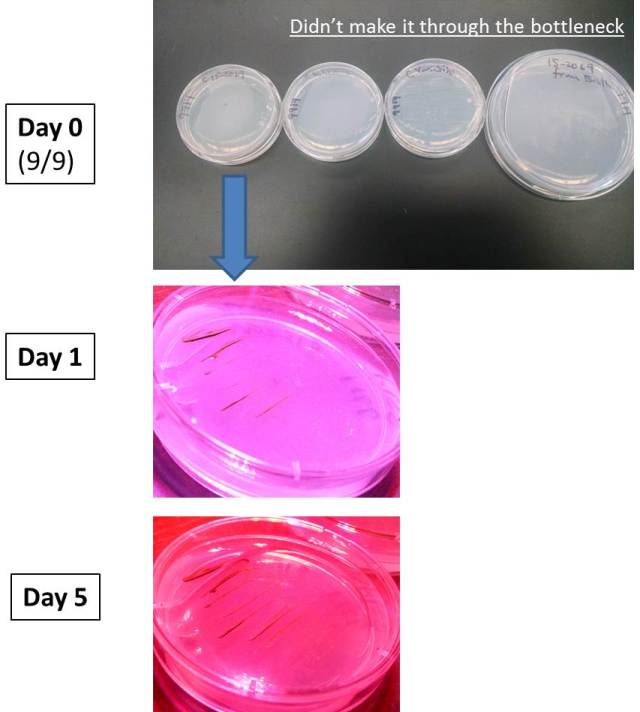My my my, how fast 6 months can go by. Due to extracurricular insanity, I wasn’t able to move any of this forward, but have recently picked it up again.
It might be good to restate what I am trying to do:
Big Picture Goals
The goal was and is to eventually have students doing some environmental virology. Viruses are mysterious bags of puzzlement to most of my students and the one time I had a lab class work with bacterial viruses it ended up barely working and I am not sure my students got anything out of it. I bet if I had asked them why we did that lab they would have answered “Because Dr Jeff was so excited to do it”. Excitement is great, but it isn’t the goal, it should be a catalyst to keep students engaged and asking questions. I guess I am assuming that they will be excited to work with viruses and I am likely wrong to some extent, in which case I will cite the very true maxim that “a teacher that is interested in what the students are doing is a better teacher” and move on.
Second goal is to make science more local to my students. With some wonderful exceptions, much of what is done in our science labs has no connection to the student’s life. If we look at organisms under a microscope, they were purchased from a company and probably come from Saint Louis or something. We have them grow plants from seeds that come from Wisconsin and aren’t even a wild plant, let alone a plant that is native to the area. They plate and test bacteria that is a strain that was purchased from somewhere in Maryland and is now distantly related from the actual person or sample it came from. I bet students think of the organisms we have in lab like babies think about people – they pop in and out of their awareness but who knows why they are there or what happens when they are not there. Might students be more likely to remember some of these concepts if they learned them from a pond that they have seen and drive by every day? If the plant they grew in lab is also one they are going to see regularly in their everyday lives, does that help to keep those neurons connected? I am betting yes.
Focused, medium range goal
- Get my students working with viruses of algae from local bodies of water, with the objective of eventually asking real questions about the ecology of these algal-viral partnerships.
- Give students manageable projects, that they can get at least poster-quality data from within a semester.
Immediate goals
Optimize growth of Chlorella and Spirogyra in liquid culture and on agar plates with an eye to getting a plaque assay going.
To do list
Perform an evolutionary bottleneck experiment by leaving the slant cultures of 3 strains of Chlorella on my desk and ignoring them for six months.(done)- Optimize growth of Chlorella on plates
- Split off Spirogyra culture from Clarkston and keep alive
Optimization of a trashed culture of Chlorella vulgaris on solid media under autotrophic conditions
Introduction
Blah. blah blah.
Methods
Replate onto fresh AlgAgar plates and put under an LED grow light, 12 hour light cycle. Place on dresser.
Results
Discussion
The strain that survived was from Carolina and had been bottlenecked on an agar slant. Interestingly, the 10cm plate was innoculated with the same strain that had been bottlenecked in a liquid culture. The growth of this strain is not robust and its possible I messed it up. I need to look through the literature to see what is known about strain to strain differences in Chlorella growth on agar. Can you adapt them to grow better on agar? Are there conditions that I am not meeting? Will this strain grow better if I give it a carbon source in the plate (glucose? Pubmed that). Alternatively, some strains might just not like growth on agar. Ask Dr. Darley.
Other issues: long term storage of strains. Can I freeze them?
Seperately – Can Spirogyra be made to grow on agar and could we screen for it’s viruses by plaque assay? This dissertation might help.
Here is what looks like a useful paper on Chlorella growth. Work backwards through the references. There has to be some studies on heterotrophic vs autotrophic growth.

